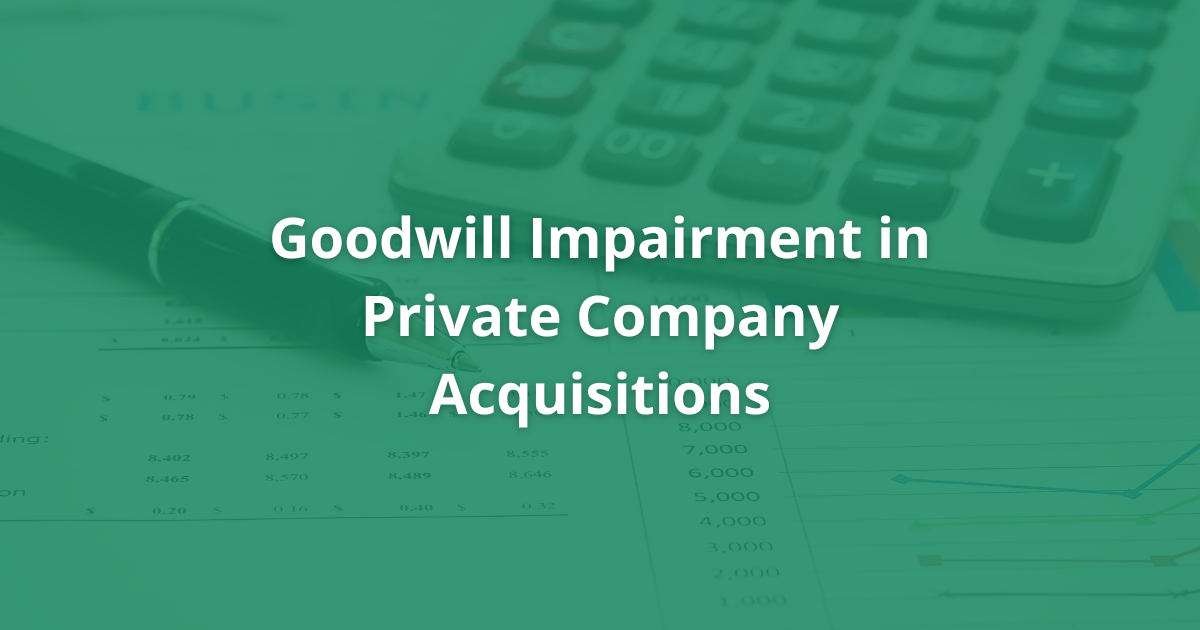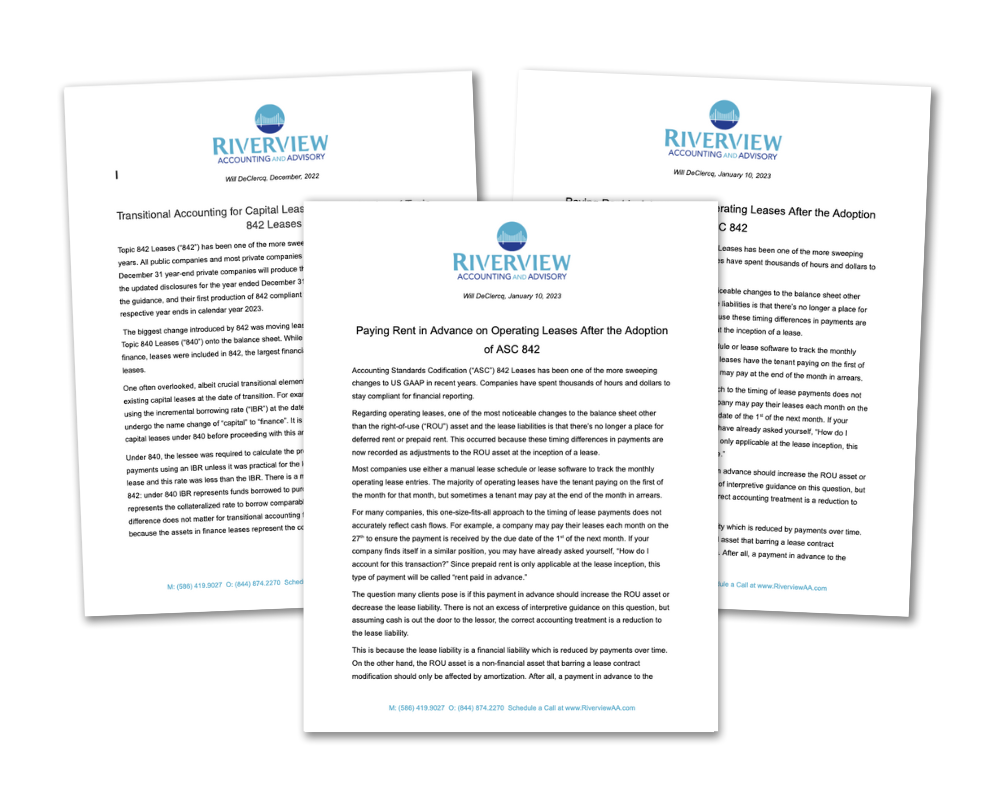Goodwill Impairment in Private Company Acquisitions

Goodwill Impairment in Private Company Acquisitions
During the past several years, acquisition activity has been occurring at a rapid pace. The low-interest rates of 2021 fueled a record number of transactions, and even though 2022 saw a drop in this activity, due at least in part to increasing interest rates, S&P reports that M&A activity in 2022 was valued at approximately $1.477 trillion1. There are not readily available figures on the amount of goodwill generated by these transactions, but with a volume of nearly 21,000 deals1, it is reasonable to expect that amount to be in the hundreds of billions of dollars.
Understanding Goodwill
Goodwill is generated when an acquirer buys a target company for more than the fair value of the target's assets and liabilities. For example, if Company A purchases Company B for $1,000,000 and the fair value of all the assets acquired less liabilities assumed is $650,000, then Company A will record $350,000 of goodwill.
Treatment of Goodwill for Public and Private Companies
Once goodwill is recorded, its treatment varies based on whether the acquirer is a public or private company. Under US GAAP, public companies leave goodwill on their books indefinitely unless the goodwill becomes impaired. Private companies, by contrast, can elect to amortize goodwill over a period of ten years (or less if appropriate). Private companies must also assess goodwill for impairment periodically: at the end of the reporting period, if the company has elected the amortization accounting option. Impairment exists if the entity's fair value is less than its carrying value. The goodwill impairment testing can be applied at the reporting unit level, but for the sake of this article, it is assumed the company will use it at the entity level.
Impairment Testing for Private Companies
Based on the number of acquisition transactions that have occurred in the past year alone, and the estimated amount of goodwill generated, it would stand to reason that a certain amount of this goodwill would eventually become impaired. It is not common to impair goodwill in the first year following an acquisition; however, during this period, auditors will likely start to review if the forecasts used to estimate the fair value of the target company have come to fruition.
Auditor Review and Early Indicators of Impairment
In order to properly assign a fair value to a prospective target, it is usually necessary to engage a third-party valuation firm. These firms use a number of different techniques that include an assessment of the prevailing market conditions, comparisons to similar companies, and the costs of debt and equity to determine the fair value of the enterprise and, thus, the goodwill in the transaction. But, these valuations are inherently limited in that a valuation is heavily dependent on the forecast of future financial performance of the target company. Auditors are not valuation experts, but it is a common procedure during a financial statement audit to compare the forecast to actuals. This process will start to flush out potential impairment even in the early months following an acquisition.
Implications of Goodwill Impairment
Since a goodwill impairment charge is a debit to the income statement, it will have an unfavorable impact on the bottom line. It could also possibly lead to debt covenant violations if the covenants are based on a metric that doesn't allow the add-back of goodwill impairment charges, such as modified EBITDA.
Mitigating Impairment Risks
A company contemplating a merger can protect itself from potential impairment charges to some degree by performing its own analysis of goodwill impairment during the due diligence phase of the deal. That is, estimate the amount of goodwill and the variations in the forecast that would produce a material change in the fair value of the target company, i.e., how wrong can the estimates be before indicating impairment. The outcome of this analysis will vary widely based on the transaction details, but if a relatively small fluctuation in the forecast produces a relatively large swing in the fair value of the target company, then it can be concluded that the transaction is at a higher risk of future goodwill impairment.
Considerations for Management
Simply knowing that a transaction includes an inherently higher risk of impairment should not necessarily deter the investment. But it should be a consideration for management. Often, management appears blindsided by a goodwill impairment charge when they have all the data necessary to do a robust impairment analysis before the deal closes.
Conclusion and Assistance
We understand that considering an acquisition can be stressful. We are here to help. Let us know if and want more information on performing this goodwill impairment analysis. Connect with Riverview at ‘info@RiverviewAA.com'.
1 – Brennan, Dholakia, M&A Activity Slumped in North America in 2022 After Record 2021, S&P Global, May 5, 2023
Download The Article

